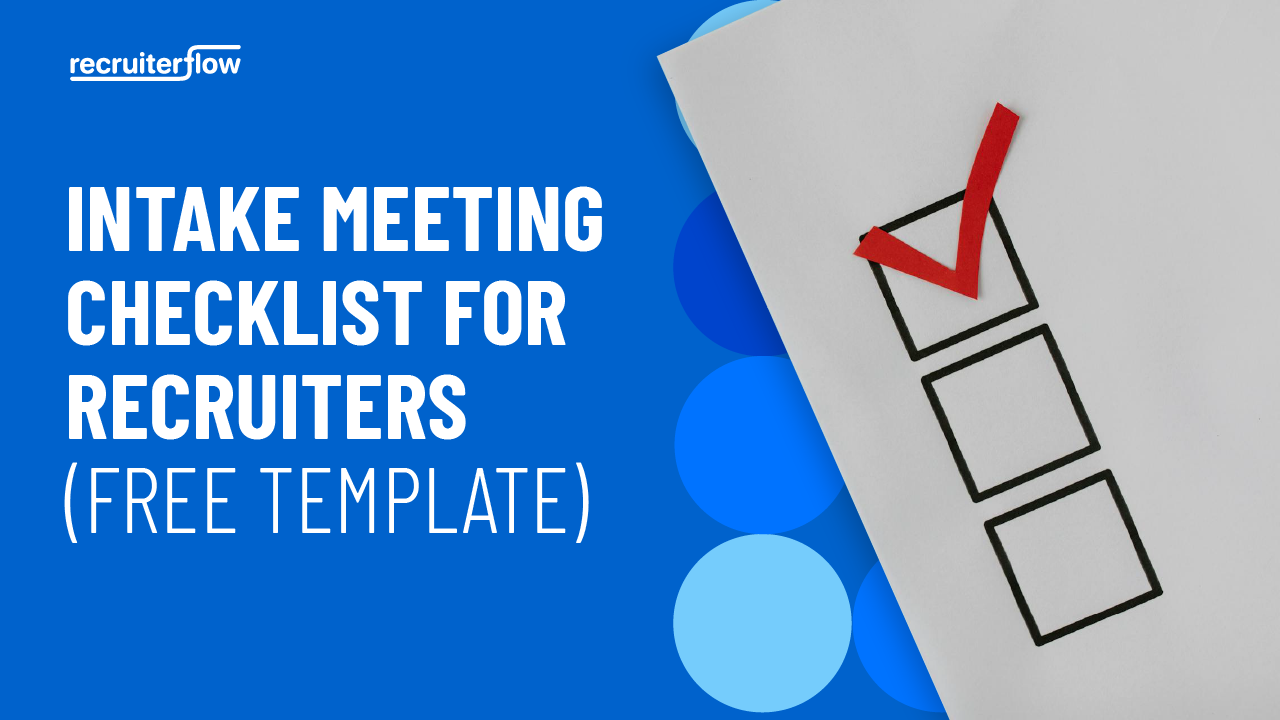
What is an Applicant Tracking System? A 101 Guide

Research shows that 55% of recruiters spend an average of eight hours per week—equivalent to a full workday—on administrative tasks like screening resumes, scheduling interviews, and managing candidate communications.
Compared to traditional, manual hiring methods, implementing an Applicant Tracking System (ATS) can dramatically streamline these tasks, reducing time spent on administration and improving efficiency.
Companies that adopt hiring software report a 27% faster time-to-fill for open positions and a 20% reduction in cost-per-hire, leading to a more effective and less costly recruitment process overall.
In this article, we’ll investigate the Applicant Tracking System, what it does, and its role in organizing hiring workflows and implementing best practices.
What Is an Applicant Tracking System?
The Applicant Tracking System primarily serves as a database for monitoring the entire recruitment process, including job applicants, the status of each application, candidate information, and so on. The ATS can also organize applicants based on metrics like experience and skill set and even set specific automated filters that act as the first layer of verification for incoming resumes.
Applicant tracking software frees up recruiters from doing unproductive tasks—manually checking every application, creating engaging job orders, posting jobs on multiple boards, tracking candidate source and status, manually sending emails and follow-ups, creating reports for internal and client governance—and lets them focus solely on the most qualified applicants.
It also helps staffing agencies implement a multitude of industry best practices when executing recruitment operations. The best applicant tracking systems (such as Recruiterflow) take on multiple roles to keep your hiring pipelines lean, accessible (to the right people), and effective.
Read More: 16 Types of Recruiting Tools to Kick off Your Hiring in 2024
How does an Applicant Tracking System work?
While the functioning of individual ATSs will vary, they do the following at a base level:
Creating the job order
Once recruiters receive the assignment and details from a client, they create a job order with the ATS. It includes the position being hired for, along with all details around expected qualifications, experience, salary offerings, and so on. It should also detail the responsibilities and goals set around the position.
Recruiterflow’s in-built AI engine RFGPT can generate detailed job descriptions from a few rudimentary details. Create an extensive framework within seconds, and make manual edits if required. What usually takes a couple of hours to do manually now becomes a matter of minutes.
Posting the job
Recruiters use the ATS to post the job on multiple job boards and platforms such as LinkedIn, Indeed, AngeList, and so on. Posts are also made on social media, either by integrating them with the ATS or simply posting from the company account.
Recruiterflow users can post jobs to 150+ integrated job boards simultaneously with a single click.
Building a candidate database
Candidates send in applications via the company website, job boards, or email resumes. The ATS maintains a record of all interactions with candidates, creating a centralized database that lies at the core of any recruiting agency’s success.
Collating resumes in different formats
Candidates will send in resumes in various formats and from diverse sources. The ATS will accept, collate, and categorize all these resumes in a single storage location. It can recognize the right sources from which applications are coming (email, job board, LinkedIn, etc.), and store this data along with the original resume documents.
Resume parsing
With all these applications, you can’t forward candidate profiles as they come in. People structure their resumes in different ways, resulting in inconsistencies that slow down the pipeline. Parsing automatically extracts and evaluates data from resumes and restructures it into pre-set, searchable formats, capturing diverse experiences such as those from one-on-one tutoring.
Parsing automatically extracts and evaluates data from resumes and restructures it into pre-set, searchable formats.
Data points like:
- Contact information
- Work experience and previous job titles
- Education
- Skills and certifications
- Employment timelines
…are derived from the CVs and slotted into the database in specific fields.
Parsing largely targets keywords in resumes, which helps match the right candidate to the job regardless of the format.
Recruiterflow supports parsing in:
- multiple languages: English, French, German, Spanish, Polish, Turkish, Portuguese, Italian, Dutch, Chinese (Simplified), Japanese, Russian, Arabic (Right to Left), Indonesian, Danish, Swedish, Romanian, Korean, Hebrew, Thai)
- and formats: DOC, DOCX, PDF, RTF, TXT, ODT, HTM and HTML, DOCM, DOTM, DOT, DOTX).
Scheduling interviews
As resumes are parsed and the best candidates are identified, recruiters schedule interviews with each. A connected AI call center system lets candidates call in to check their status or self-schedule interviews, with bookings syncing straight to the ATS calendar. Once scheduled, all interviews will be automatically viewable from your user dashboard.
Tracking candidates and processes
The ATS allows every recruiter in a team to monitor and track who they have contacted, the stage of each candidate, ideal follow-up dates, and upcoming interviews to prepare for — essentially all data related to the current hiring process. This data is made visually and immediately accessible to the right users.
ATSs will also provide features to simplify process and prospect tracking when multiple recruiters are hiring for the same role.
For example, Recruiterflow users can use the @mention feature in Notes to add contextual information about a candidate. When they add a @mention, their entire team is automatically notified, so everyone is on the same page about a particular candidate/project.
P.S: Robust candidate tracking and communication also help establish great candidate experiences for present and future pipelines.
Data analysis and reporting
The ATS can analyze all collected data, and track and report on performance metrics – time to fill, time to hire, source of hire, sourcing channel cost, recruitment funnel effectiveness, etc. Higher management and team managers use these reports to rethink processes & employee efficacy, both short and long-term.
For example, as candidates move to the client screening stage, Recruiterflow can create detailed reports with the right metrics—number of candidates, stages of each candidate, candidates ready for client interviews, time taken vs. number of candidates being forwarded, etc.
Recruiterflow also automatically generates detailed reports with customizable metrics. You can choose to create different reports for clients, your managers, and/or co-workers by including the most relevant data points for each audience.
Why do staffing agencies need an Applicant Tracking System?
Applicant tracking systems are essential for modern recruitment pipelines, as they bring a plethora of automation capabilities and industry-specific benefits to the table.
If you’re looking for a deeper dive into the following points, consider a quick read through the 15 Benefits of Applicant Tracking System (ATS).
Provides a central repository for all candidate data
The ATS will gather and store all information about every candidate you have reached out to, and vice versa. All data around:
- jobs posted
- applications coming in from each post
- candidates sourced/applied
- every source and job board involved
- every candidate’s progress in real-time
- all communications (with candidates and clients)
- number of candidates hired
- time to fill
- successful hiring rates for each recruiter (if you’re the business owner),
…and more…
is made immediately visible and accessible by the right ATS.
This information isn’t just in one place for passive recordkeeping. It is actionable and can be actively adjusted to add value to your business operations via analysis and reporting.
Automates essential but mundane tasks
All the data structuring in the world won’t make a recruiter’s life any easier if they still have to write emails or update candidate status manually. The right ATS will automate almost all daily, time-consuming tasks that do not directly contribute to completing hires.
Common tasks automated by Recruiterflow are daily calendar management, visual pipelines to track candidate/job status, report generation, account management (with clients), job order creation and posting, resume parsing, matching open jobs to candidates, outreach to passive candidates, and much more.
Send hyperpersonalized emails and texts to targeted candidates with open tracking. Tag candidates so that different consultants hiring for the same roles don’t approach the same person. Build customized scorecards for each interview to keep evaluation standards consistent and fair.
By putting the non-essentials on autopilot, recruiters and agency owners can focus on optimizing their processes, sourcing the best possible candidates, and matching them to the most appropriate roles.
Enables data-driven decisions (for strategy, team & process management)
Read More: How to Develop a Data-Driven Recruiting Strategy ||
In any modern industry, including recruitment, data holds the key to continued business growth. Let’s say you, the agency owner, have scanned through the performance reports of different recruiters under your employ. You notice that certain recruiters seem to get better results and take a closer look at their processes.
While your agency’s policy is to send two follow-up emails if a candidate does not respond to an interview request, these recruiters have been sending one follow-up email and then calling to remind them. In these cases, more candidates respond positively and schedule interviews.
The ATS not only allows you to track and notice such changes but also recreate such processes or “recipes” for other recruiters in the team. Simply use the ATS (such as the Recruiterflow UI) to put together a recommended workflow, and all your recruiters will be nudged (by the tool) to make a phone call after the first email.
Now, extrapolate the above process for all recruitment operations. The ideal ATS can track, adjust, and represent chosen data points to create specialized reports. As in the example, you get a bird’s-eye view of how all recruiters are performing. Easily derive insights around success rates for each employee and move them to align with areas (industries, locations, or niches) best suited for their talents.
If you’re a Recruiterflow user, you can generate different reports for your manager, the managers of other teams, the clients, and for higher management in the agency (if so required)—with about 2–5 clicks. Additionally, Recruiterflow enables role-based access so that employees at different operational levels can view information directly relevant to their responsibilities.
Improves Candidate Experience
Don’t forget that “84% of job applicants expect some kind of response soon after submitting their job application, and 48% of job applicants report the most frustrating part of the job application process is not getting a response.”
The ATS will make it easier and faster to create positive candidate experiences. For instance, automate emails to notify candidates of their current stage in the hiring pipeline. Stay visible to the best candidates by tracking their employment status—actively looking for a new job, open to new roles, etc. As soon as a candidate shows interest, the ATS matches them to open roles they are suited for and nudges the recruiter to fire off an email or text message.
Similarly, create automated messages to congratulate candidates on important days—birthdays, new positions at work, and new life events (based on, say, their LinkedIn profiles).
In Recruiterflow, you can do all the above (and more) by creating “Campaigns” that automate any necessary actions. You can also use “Campaigns” to provide nudges to take certain steps to respond to certain events.
Facilitates efficient communication with customers
The ATS worth your investment will carry features to simplify communication with customers, too.
Recruiterflow offers a dedicated client portal that allows you to:
- share all the candidates with the client at a particular stage.
- enhance the client experience by customizing the client portal (add the client’s logo, configure certain fields to be visible, allow clients to “thumb up” or thumb down” a candidate).
What to look for when choosing an ATS for your recruitment agency?
There are a plethora of ATS available in the market, and choosing the right one that suits your recruitment needs can be a daunting task. We have listed down a few must-have features of an ATS. To get a detailed insight into these features, read our blog: 10 Essential Application Tracking Software Features for Efficient Hiring
1. Candidate Pipeline Customization:
Choose an ATS that gives you the ability to customize the hiring pipeline as per your hiring stages.
2. Advanced Resume Analysis and Matching:
The ATS should be able to scan through resumes and list ideal candidates by implementing refined keyword identification and search.
3. Effortless Job Board and Social Media Integration:
Your chosen ATS should integrate with major job boards to save time and expand candidate searches without much hassle and configuration.
4. Capabilities for Reporting and Analytics:
Modern staffing agencies require data-driven strategies and comprehensive analytics and reporting features. For instance, the ATS should, by default, cover metrics like time-to-fill and best practices in candidate sourcing.
5. Automated Candidate Communication:
Your ATS should keep candidates updated via automated messages to keep them apprised of their progress. Such a tool will immediately improve how your agency is perceived in terms of professionalism and credibility.
6. Emphasis on Compliance and Security:
The ATS must have enhanced security and comply with regulations like GDPR. Robust data encryption and controlled-role-based access, and guards against identity theft/phishing, should also be at the top of your mind when choosing an ATS. Staying vigilant against cyber threats is also essential, especially with the growing frequency of the biggest DNS attacks that can compromise sensitive applicant data and disrupt system functionality.
7. Mobile Accessibility and Intuitive Design:
Recruiters often have to move around to do their job—meeting candidates, conducting interviews, conversing with clients, and so on. The ATS should be accessible on mobile devices with an intuitive and easily usable interface. Recruiters should be able to refer to data in the ATS to assist their activities on the field.
8. CRM Integration and Tool Compatibility:
The ATS tool should seamlessly integrate with your CRM system and other tools your team uses daily. Multiple integrations of this nature serve to improve organization efficiency and candidate communication.
9. Customized Career Pages:
Your ATS should enable you to create customized career pages.
10. Candidate Scoring:
Your ATS should have features for objectively evaluating candidates based on predetermined metrics. Interviewers should also be able to leave structured notes and personalized scores—information that the ATS can use to formulate quality scores.
Don’t forget the right questions to ask about an applicant tracking system & CRM. When you know exactly what you want, you’ll be able to identify it that much quicker. Similarly, don’t make these 5 mistakes when choosing your ATS.
10 Best Applicant Tracking Systems for Small to Large Businesses
There are hundreds of ATS solutions on the market, but some definitely stand out over others. This article doesn’t have the space to dive deep into their features, but you can find extensive details on these tools in Best Applicant Tracking Software (ATS).
- Recruiterflow
- Bullhorn ATS
- Freshteam by Freshworks
- Zoho Recruit
- Recruitee
- BambooHR
- JazzHR
- Greenhouse
- Workable
- Rippling
Also, read our blog on recruitment marketing to discover strategies that help you attract and engage top talent effectively.
Why Recruiterflow is the ATS to match your goals?
Recruiterflow stands out with its visual hiring pipelines that give you unparalleled visibility. A simple drag-and-drop interface simplifies the maintenance of these pipelines.
The tool sets out a plethora of ATS features designed specifically to simplify the recruitment process. We’ve already mentioned a few, but it has more to offer:
- Native email integration
- Get “click to call” and “texting” baked into your interface. Automatically log calls & text messages.
- Advanced Resume Parsing
- Integration with 150+ job boards
- Advanced client portal to keep clients in the loop about the hiring process
- Advanced automation
- Create custom submittal formats.
- Automatically brand resumes with your logo.
- Chrome Extension
- Open API for seamless integration with other tools and software
- Ability to edit the resume right in their ATS
If you’re still curious, how about a quick look at these reasons to choose Recruiterflow? We’re happy to give you a demo of the tool, or you could try a 14-day free trial.
Recruitment






Abhishek Sharma